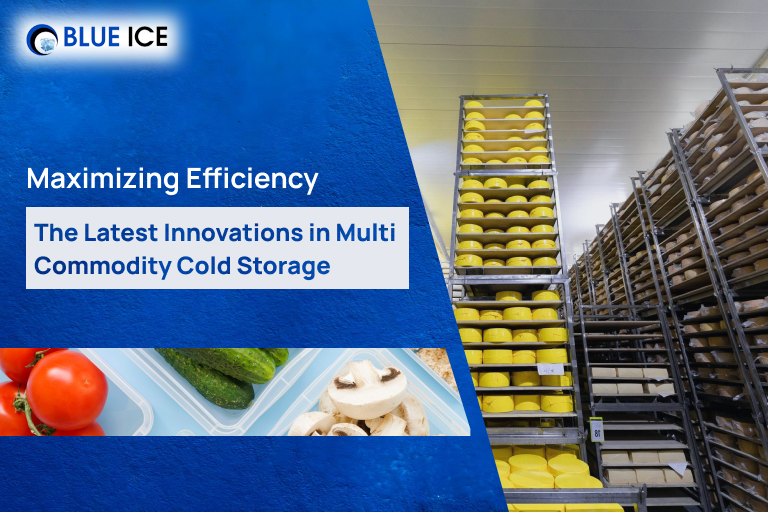
Cold Storage Company

Cold Storage Company

As industries evolve, so does the technology that supports them. Multi commodity cold storage is no exception, with recent advancements aimed at boosting efficiency and sustainability. This article brought to you by one of the best cold storage manufacturers in India looks into the latest innovations shaping this crucial sector.
The rapid evolution in cold storage technology is primarily driven by the necessity to reduce energy consumption and increase the longevity of perishable products. Innovations such as solar-powered cooling systems and Phase Change Materials (PCMs) are revolutionizing how commodities are stored. For instance, the integration of PCMs, which are substances capable of storing and releasing large amounts of energy, enhances cooling efficiency by maintaining consistent temperatures without continuous power input.
Energy costs constitute a significant portion of the operational expenses in cold storage facilities. With electricity prices climbing and environmental regulations tightening, the cold storage industry is compelled to adopt more energy-efficient technologies.
The diversity of climatic conditions and agricultural products across regions like India necessitates customized cold storage solutions. By tailoring facilities to meet local needs, businesses can reduce waste, lower costs, and improve supply chain efficiency.
In the realm of multi-commodity cold storage, maintaining precise environmental conditions is not merely beneficial—it's imperative. The degradation of perishable items, whether foodstuffs or pharmaceuticals, can occur swiftly if temperatures fluctuate or are improperly managed. Modern cold storages are increasingly incorporating advanced monitoring systems that employ real-time sensors and Internet of Things (IoT) technology. These systems provide a comprehensive overview of the conditions within the storage facility, allowing for immediate adjustments and minimizing the risk of product spoilage.
As technology advances, so too does the scope of what can be efficiently stored in cold storages. Traditionally focused on food items, modern multi-commodity cold storage facilities now cater to a broader range of products. This expansion is largely driven by the adaptability of storage technologies to maintain specific environmental conditions required by different commodities, from pharmaceuticals to floral products, each demanding unique humidity, temperature, and even lighting conditions.
Through the incorporation of advanced technologies and the expansion of storage capabilities, multi-commodity cold storage facilities are not only improving their operational efficiency but also broadening their impact across various industries. This evolution is essential for meeting the complex demands of today's global market, ensuring that perishables are kept in peak condition from point of origin to consumer.
Blue Ice India, one of the leading cold storage manufacturing companies in India is at the forefront of integrating these cutting-edge technologies into our cold storage solutions. Our commitment to innovation and quality ensures that we offer the best services for food preservation and storage, helping to sustain high standards and maximize efficiency across the cold chain. By investing in advanced systems like solar-assisted cold storages and multi-temperature facilities, we strive to meet the diverse needs of our clients, ensuring that their products maintain optimum freshness from farm to consumer
Queries
Facilities for multi-commodity cold storage usually keep a range of temperatures appropriate for several commodities. Fruits and vegetables may withstand temperatures that are slightly above freezing, whereas meat and fish must withstand temperatures below freezing.
The length of storage is determined by the commodity's kind and unique needs. Commodities can often be kept in storage for a range of times, from a few days to several months, contingent on variables including humidity, temperature, and packing.
Strict safety procedures are used in multi-commodity cold storage facilities to guarantee the integrity and security of the commodities being stored. This include keeping an eye out for temperature variations, maintaining temperature control systems on a regular basis, and adhering to cleanliness and hygiene regulations.